When riding an e-bike, riders may encounter a variety of problems during their rides. However, one of the most common problems riders may find is a flat tyre during their ride. The purpose of this article is to help you understand how to deal with a flat tyre or prevent it from happening in the future.
What causes a flat tyre?
Sharp objects
The most common cause of a flat tyre is a sharp object that punctures the tyre during the ride, resulting in an air leak. Common sharp objects include broken glass, nails, screws, or other sharp debris. Avoid flat tyres by avoiding sharp objects where possible and riding carefully around construction sites.
Terrible road conditions
Potholes can also be a threat to tyres, especially rough gravel which can also accelerate wear and tear. Especially when combined with the high speed of the e-bike, the chances of a tyre blowout are significantly increased. The best thing you can do if you're driving on roads with poor road conditions is to keep your speed as low as possible so that you have enough time to react to any danger that might come your way.

Weather and temperature
One of the reasons that can easily be overlooked is that the outside temperature also affects the condition of the tyre. There is no doubt that the higher the temperature outside, the more the pressure inside the tyre expands and eventually results in a blowout, which is why more blowouts happen in the summer.
Tyre wear and tear
Sometimes a flat tyre is not always an external cause, but can also be a problem with the tyres themselves. One of these is excessive tyre wear which can also cause a tyre to leak. As you use your tyres over time, the greater the probability that they will wear out and the greater the chance of a blowout.
Inappropriate tyre pressure
If tyre wear is not the cause either, then it is time to consider whether it is a matter of not having the right tyre pressure. To drive your vehicle safely, you must maintain the correct tyre pressure. When the tyre pressure is too low, the tread on the tyre will not be hard enough to overcome the threat posed to the tyre by most obstacles.
How to avoid the flat tyre
-
Set the appropriate tyre pressure
Tyre pressure is a very critical part of the whole riding process. The right tyre pressure will not only make the whole ride twice as effective but will also avoid a lot of cycling problems.
The process of cycling depends heavily on tyre pressure. Proper tyre pressure not only improves pedal efficiency but also helps you ride more safely.
An electric bike typically has different tyre pressures than a traditional bike. Normal bicycle tyre pressure ranges are 45 to 65 psi. However, fat tyres allow for significantly lower pressures. To assist you in picking the proper tyre pressure, you may refer to your electric bike's instructions or get in touch with the manufacturer. While some riders contend that a bicycle with lower tyre pressures is more comfortable to ride since it has a broader area in touch with the ground and the tread absorbs the majority of road bumps.
A blowout, however, can easily result from improperly low tyre pressure. This is more threatening to the tread due to the wider contact area with obstacles. But don't over-inflate either - every tyre is rated at a critical level and can be damaged if the range is exceeded. So try to choose a higher pressure within the range to make your tyres more resistant to blowouts. The tyre pressure of Cyrusher is rated between 15-20psi, and you can determine the range by looking at the values on the sidewalls of the tyres. What's more, you can use a tyre pump or pressure gauge to test the pressure of your tyres and monitor your electric bike better.

-
Check the tread regularly
Regular tread checks after each ride are an essential part of avoiding flat tyres. Check that the tread has not been punctured by sharp objects during the ride, and have it repaired and replaced in time. You can also check the tread for wear and tear. Avoid using tyres with cracked tread, as old worn tread can easily produce dangerous situations such as blowouts.
-
Choose the anti-flat tyre material
This anti-flat product can help you prevent air leaks and flat tyres from being punctured by sharp objects on the road. It can also help to repair and fill a minor puncture in the tread, saving you the expense of changing the tyre straight away. Squeeze the sealant into the valve and apply it to the inside of the tube. It will completely seal any minor cuts or punctures in the tread, stopping your tyre from leaking and allowing you to carry on with your regular riding. Whenever your tyre incurs a small puncture, such as a tiny stud, you can use this sealant. It will help fill the hole and hold the impurities in place, sealing your tube.
-
Ride your electric fat bike sensibly
Tyres can easily be punctured by sharp objects such as nails, gravel, pieces of glass, screws, etc. There are also different hazards hidden on different riding roads. It's better not to pull over on city roads, where many hazards can accumulate on the side of the road and threaten your tyres. When riding on mountain roads, be aware of the roughness of the road. Plan your route wisely and avoid sharp obstacles in advance to better maintain tread safety.
-
Choose the fat tyre electric bike
Typically, traditional bicycles have narrow tyres that ride more efficiently, but these are not the appropriate choice for electric bicycles. Although they offer a faster ride, normal tyres are also more susceptible to the effects of the driving surface, which can result in a blowout. In contrast, fat tyres are used to provide a wider contact area while providing better cushioning. Having some shock absorption and being more tolerant of road obstacles will reduce the risk of a blowout. Furthermore, the choice of tyres is based on branded products that have undergone repeated quality checks to avoid using low-quality tyres.
Cyrusher, a specialist manufacturer of fat-tyred e-bikes, offers many cyclists a choice of models with a wide selection of cost-effective options. All vehicle models are made with quality fat tyres, mostly from the Chaoyang or Kenda brands, for guaranteed quality. They guarantee riding stability while helping riders to open up more riding possibilities on the road.

How to deal with a flat tire
Although replacing a flat tyre after a blowout is very tricky, it is not as complicated as you might think. You need to refer to the steps on how to remove the flat tyre and then how to replace it with a new one. One of the most challenging and critical parts of the process is to protect the wire connectors and other components.
Since the majority of e-bikes have rear hub motors, the rear wheel bears a heavier load than the front wheel, making it more susceptible to flats. The following reference advice is for rear wheels with hub motors. It should be noted that there will be different operating steps for the wheels depending on their position.
Firstly, disassemble the electric bike's detachable components to save weight and make it simpler to turn the vehicle upside down. The dismantled bike frame is supposed to be placed on a blanket to prevent scratching the components of the vehicle.
Next, it is time to focus on how to separate the hub motor from the rear wheels. The rear wheel is typically connected to the rim brake, hub motor, connector, and other parts. Disconnect the connectors and loosen the screws if they are connected by wire or screw so that it will be easier to remove the back wheel. In order to prevent parts from being damaged carelessly, distinguishing between components and wiring is critical during operation.
Once the tyre has been disassembled, check to see if a puncture is visible. If it is a hole punctured by a nail, sandpaper can be used to smooth it out before applying glue and then a patch sticker. This method will still allow you to ride your bike for a while. If the hole is obvious, you will need to replace it with a new tube. A new valve stem is then inserted into the rim. The tyre bead is re-installed into the rim. Then inflate the tyre with the proper PSI. Make sure the beads are properly aligned all the way around.
Several ebike models do not have in-line connectors, which can make operation more difficult. You can take your electric bike to a nearby garage for a tyre repair.
Take your electric bike for a test ride to ensure the starting and braking functions are working properly. This is the final step to ensure that the tyre has been changed correctly and successfully.

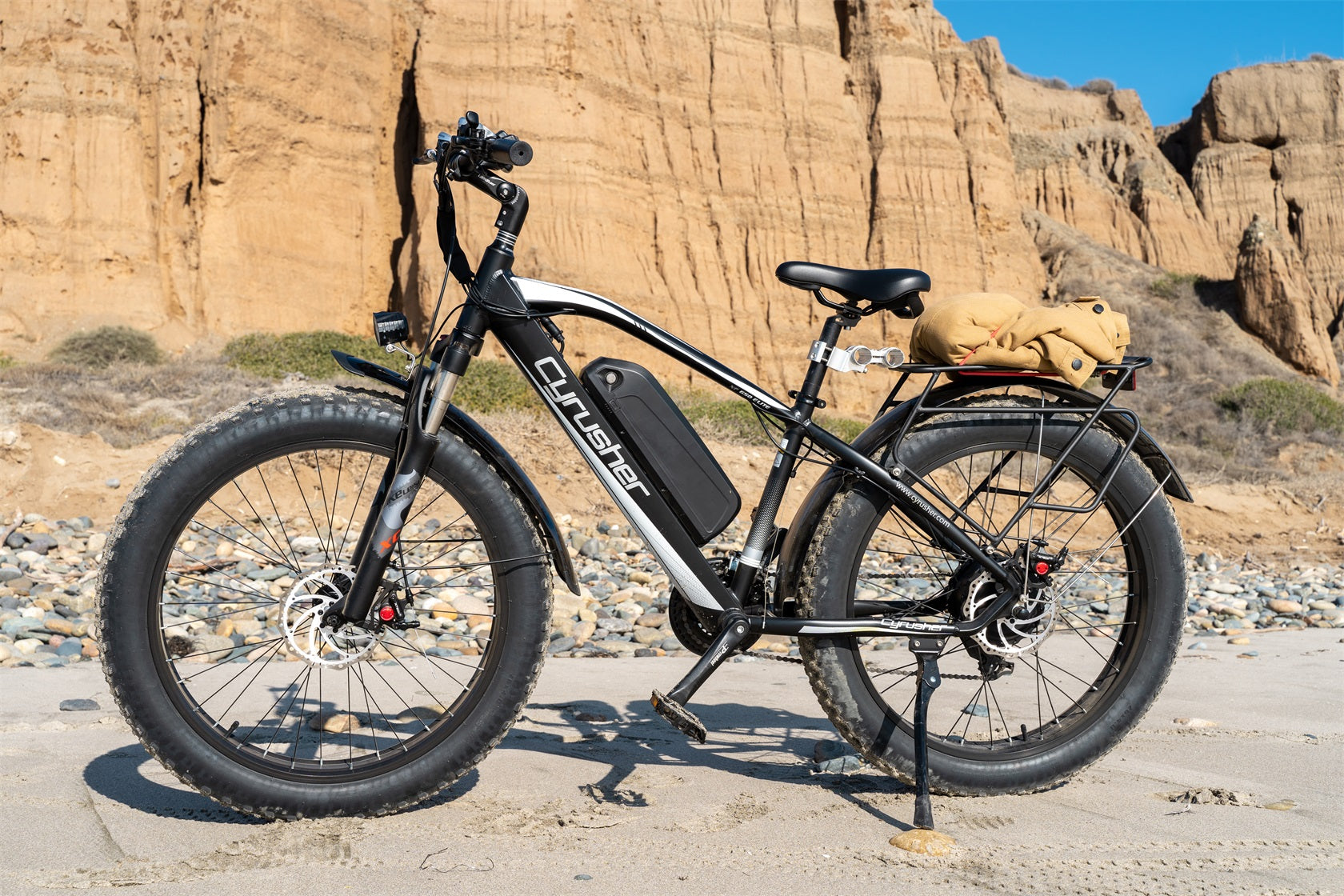

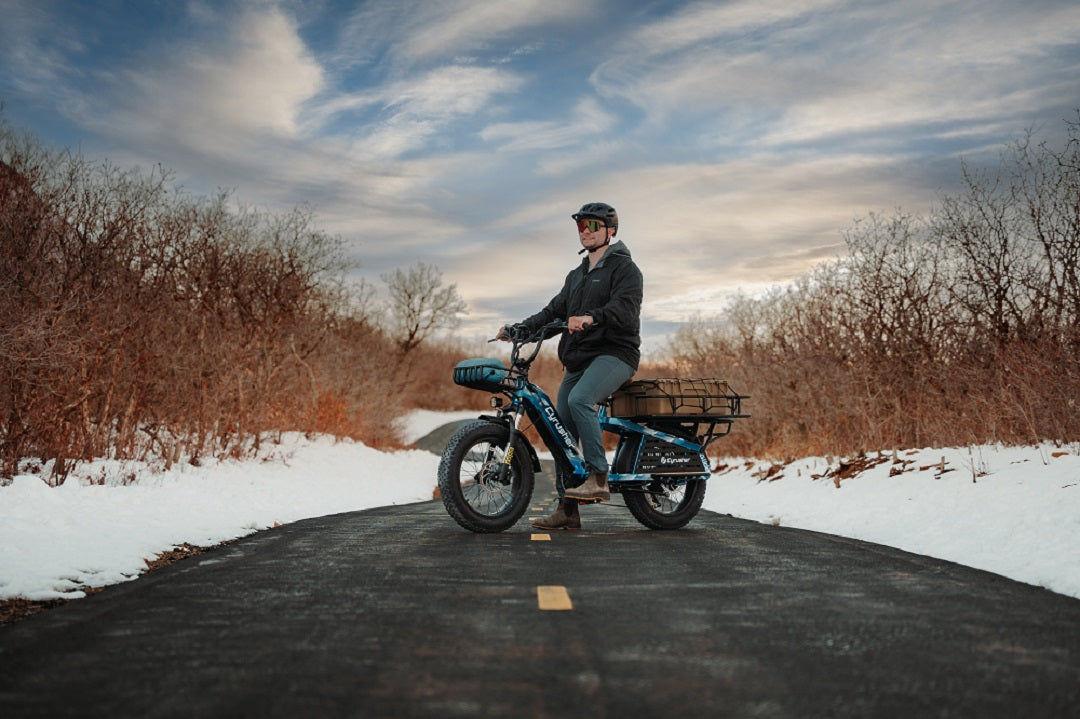
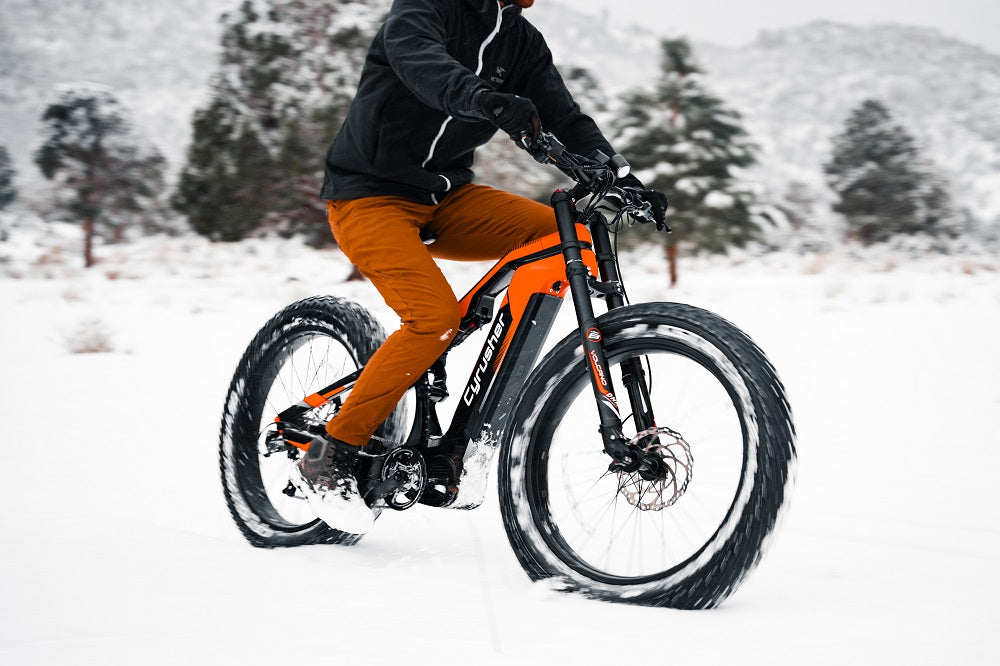
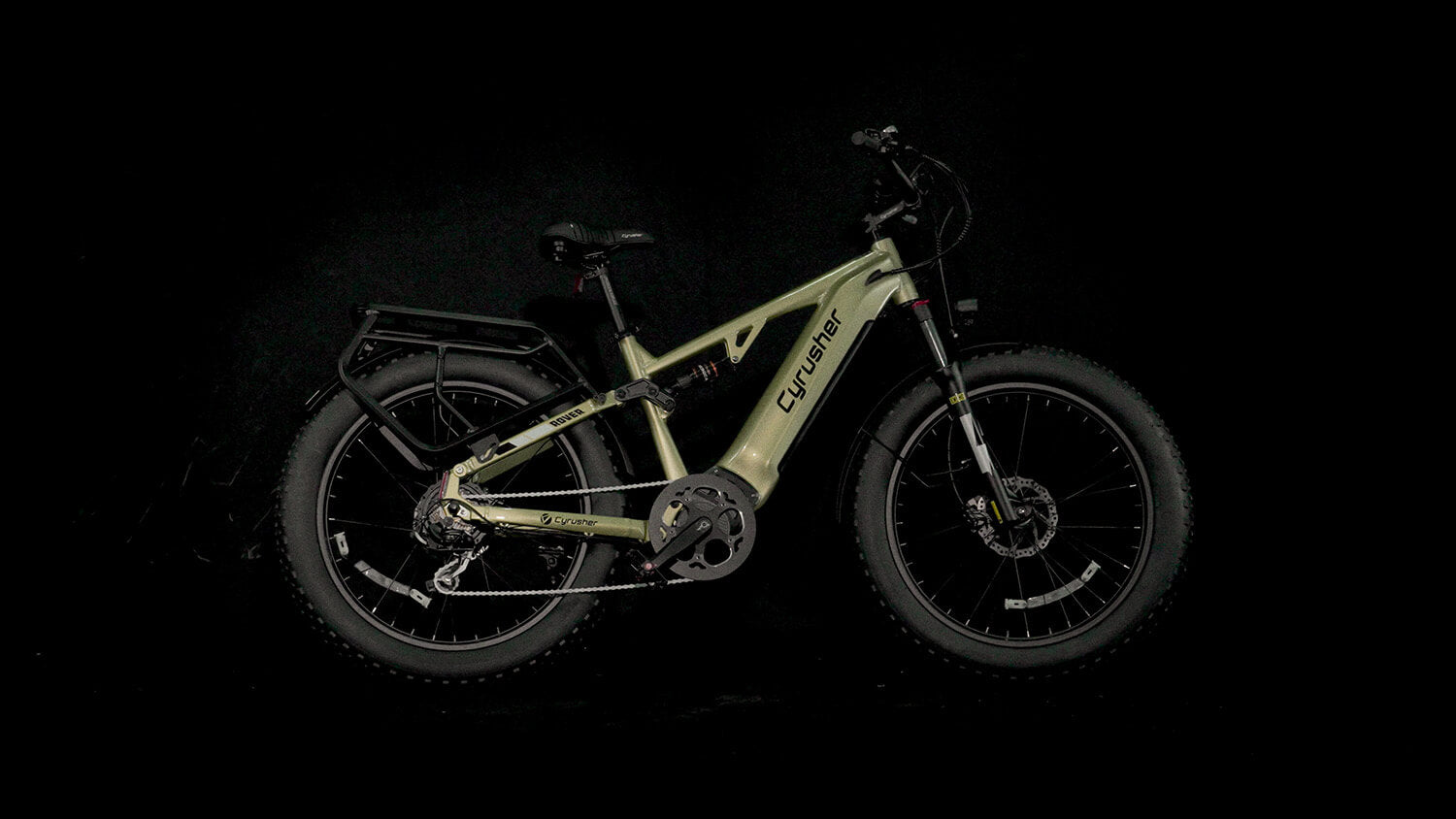
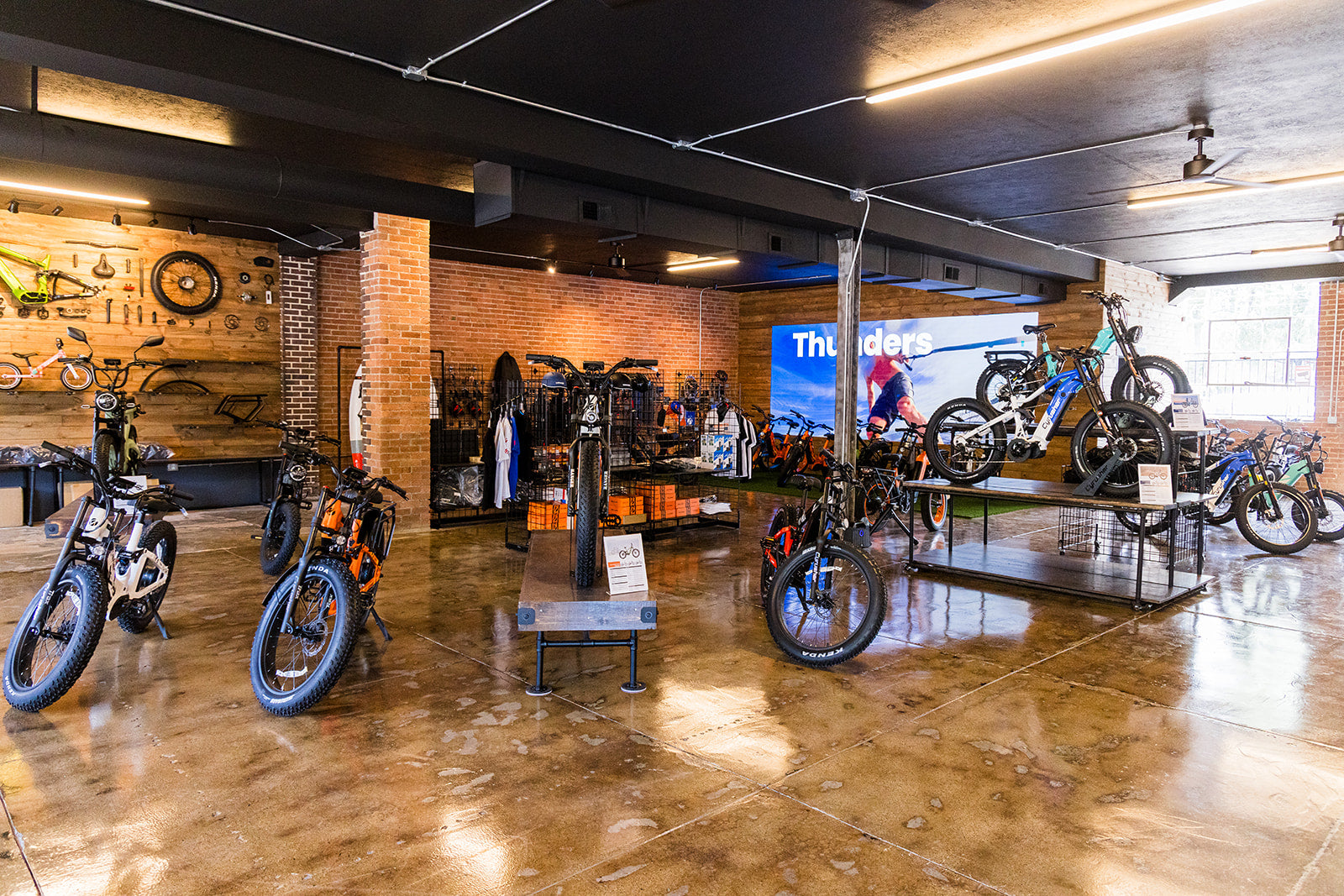
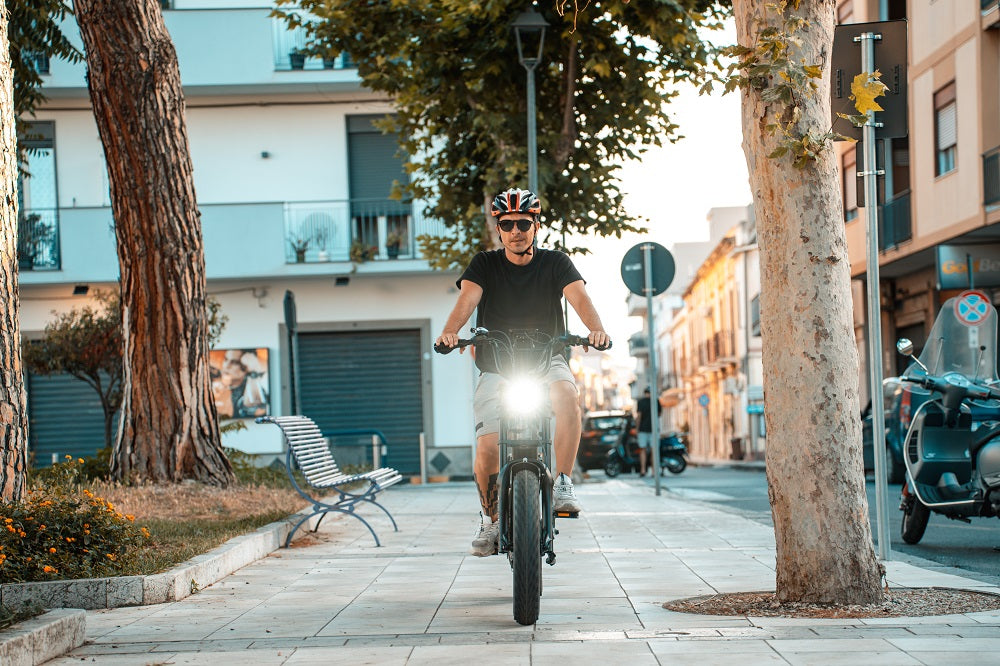

Share:
Tips for Riding Your Ebike in Winter
The Best Electric Fat Bike for Commuting